Overview
Led by Duke neurosurgeon Nandan Lad, MD, PhD, Duke NeuroInnovations educates and empowers health technology innovators and leads the transition to a value-driven innovation ecosystem.
This mission drives a focus on helping the most promising health technology innovators to realize their full potential for the greatest impact in a rapidly changing healthcare field.
Today, a new era of health economics demands that emerging technologies improve health outcomes while simultaneously reducing costs and/or increasing cost effectiveness. In this environment, where traditional funding mechanisms and business strategies no longer work, our goal is to prepare our aspiring inventors with the acumen and agility they’ll need to succeed.
Duke NeuroInnovations utilizes the Biodesign Process: a systematic approach to needs finding and the invention and implementation of new biomedical technologies.
Key components of the program include classes in medtech innovation; mentoring of residents, students and faculty in the biodesign process; career services for students interested in medtech careers; and community educational events.
Biodesign
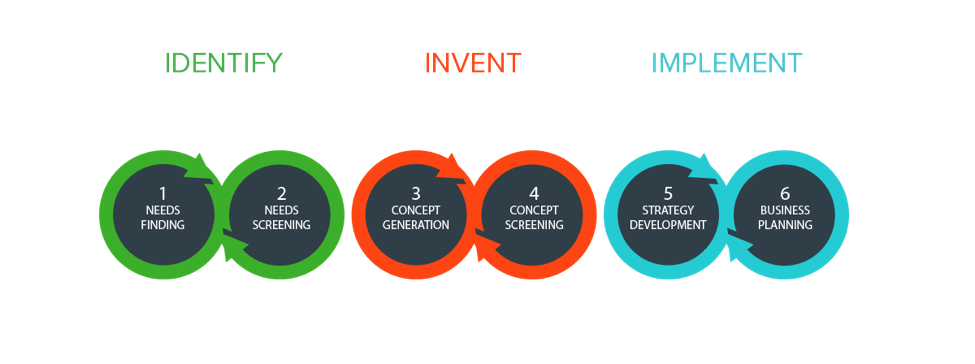
We teach the Biodesign innovation process to our residents, fellows, students, and faculty trainees through hands-on, project-based activities that follow three key phases:
Identify
The identify phase is first and foremost about finding important unmet health needs. By directly observing the full cycle of care from diagnosis and treatment to recovery and billing, our trainees discover problems and opportunities. They watch what’s done and how it affects the provider, the patient, and the system, while asking pointed questions that challenge the status quo.
During this first-hand observation period, it’s ideal to collect hundreds of needs, initially without judging or prioritizing. Then, it’s time to filter the list with rigorous objectivity, considering everything from the different stakeholders affected by each need to how much potential it has to improve care and/or save the system money. This is an intense and iterative process, with progressively deeper dives into the needs that have the most potential. Ultimately, the trainees arrive at the two or three most promising needs which—if they can be solved—will have major impact on health and wellness.
Invent
Next, Biodesigners begin to invent. They brainstorm hundreds of potential solutions for each of their top needs. Then, they organize their ideas and objectively compare them against key criteria for satisfying the needs. During this phase, our trainees create rough prototypes in a rapid “think-build-rethink” sequence, so failures emerge early and iteration can lead to better solutions. They then filter the surviving solutions by researching everything from intellectual property issues and business models to reimbursement and regulatory pathways. In the end, the process produces a lead concept that has done battle with a number other ideas that were almost as good. It’s survival of the fittest—and it guarantees that the lead concept has a good chance of reaching and improving patient care.
Implement
In the implement phase, our trainees take the next steps in prototyping and testing their technology, developing their approach to patenting, regulatory approval, and reimbursement, charting the market potential for the innovation, and exploring sources of funding. To help them, we bring in the “varsity players”—industry mentors with deep business knowledge and experience who know the health technology sector inside and out.
In the end, each team will have generated an invention and a plan for execution that is as at least as well formulated as any Silicon Valley “pitch.” And, in fact, many of these projects do wind up being successful businesses. But that’s beside the point. The most important “product” of the NeuroInnovation Program and Biodeisgn Process is the trainees themselves. They are masters of the biodesign innovation process and will go on to use it again and again in their careers, whether in business or academia.
It’s the kind of training that produces innovators with lifelong impact.
Process
Through the Front-End of Biodesign Needs Identification and Development, the most promising concepts can be vetted through the NeuroInnovations Program and detailed, constructive feedback given to guide the project forward.
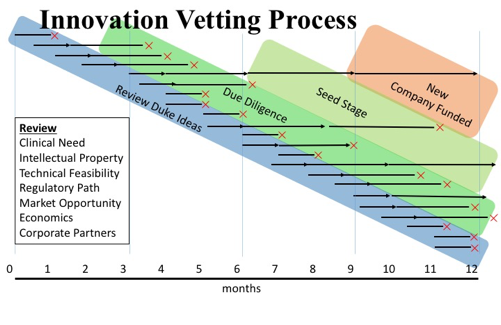
Students/Resident/Faculty participate and learn through a comprehensive due diligence process. A small percentage of projects are selected by the NeuroInnovations Program for Departmental seed funding to develop them further towards key milestones that may result in licensing or new company formation.
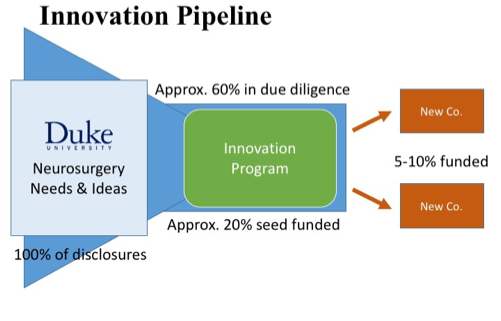
New Inventions are filed through the Duke Office of Licensing Ventures (OLV). There are different paths forward including licensing to an existing commercial entity or building a new company. The NeuroInnovations Program advises and helps new inventors through this process.
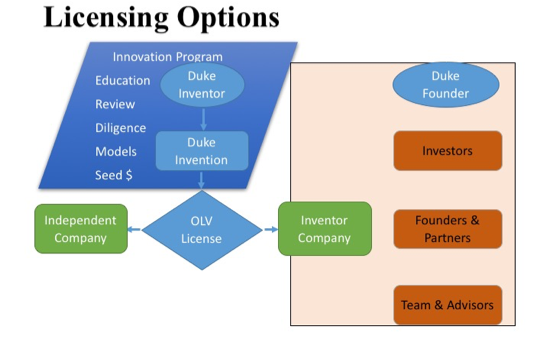
Participate
Partnerships
We are dedicated to advancing value creation in the life sciences industry. We partner with life sciences organizations that have products that are used in neurosurgery, neurology or translational neuroscience to identify the Front-End of innovation and work with their R&D groups. This process ties in closely with the Duke Neuro-Outcomes Program in terms of outlining the economic evidence needed for innovations in our field.
Invitation to Participate
- Multidisciplinary or specialized groups welcome.
- Identify unmet clinical needs; select one or more.
- Brainstorm solutions to selected need(s).
- Document potential solutions and contributors.
- Summarize the need, solution(s) and benefits.
- Reserve time to meet with the NeuroInnovations team.
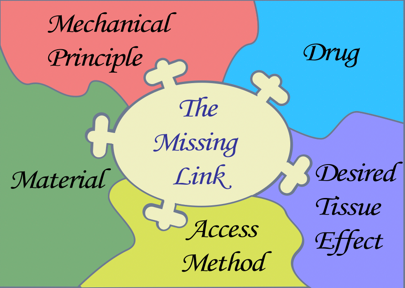
Initial Steps
We ask that each individual interested in NeuroInnovations start by summarizing the following 3 Items:
Clinical Need
Described the clinical condition, the goal of diagnosis or therapy, and the standard of care today. Specify what improvements are needed and are nice to have.
Proposed Solution
Describe idea(s) for meeting the clinical need, including: physical, biologic, chemical or features, functional performance, data or information technology, etc. and how these meet the need.
Primary Benefit
Explain the advantages of the preferred solution over the standard of care, including: clinical outcomes, patient experience, reduced risk, ease of use, time savings, cost of care, etc.
Focus Areas
The NeuroInnovations Program believes the Biodesign Process is applicable to all areas of Neurosurgery.
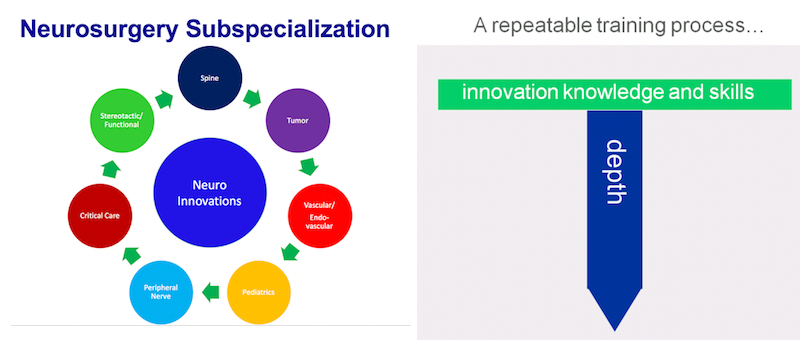
Duke Neurosurgery faculty and residents have co-founded 8 companies (and growing) that have either been acquired or in various stages of development, in all areas of neurosurgery.
There are many current resident and faculty projects underway and topic areas include:
- Hydrocephalus
- Patient engagement
- Drug-device combination
- Virtual reality
- Noninvasive biomarkers of disease
The number of projects continues to change and grow each year, based on student/resident/faculty need identification and development. Regardless of your area of subspecialty, the Biodesign principles can be applied to innovate in one’s chosen area of focus.
We believe that Innovation can be taught and learned.
This allows one to go in depth into any given area and make a significant impact in their field of choice.
Contact Us

Individuals interested in working further with the Duke NeuroInnovations Program should contact:
Nandan Lad, MD, PhD
Duke University Medical Center
DUMC Box 3807
Durham, NC 27710
919-681-4986
nandan.lad@duke.edu